V-F-X Ljubljana, 11 – 14 May 2023
3rd International Festival of Experimental Audiovisual Practices V-F-X Ljubljana V-F-X Ljubljana
Venues: Project Room SCCA, Slovenian Cinematheque
Friday–Sunday, 5 – 7 May 2023
Project Room SCCA, Metelkova 6
A Picture of the Materiality of Light and the Toxins of Plants
Workshop
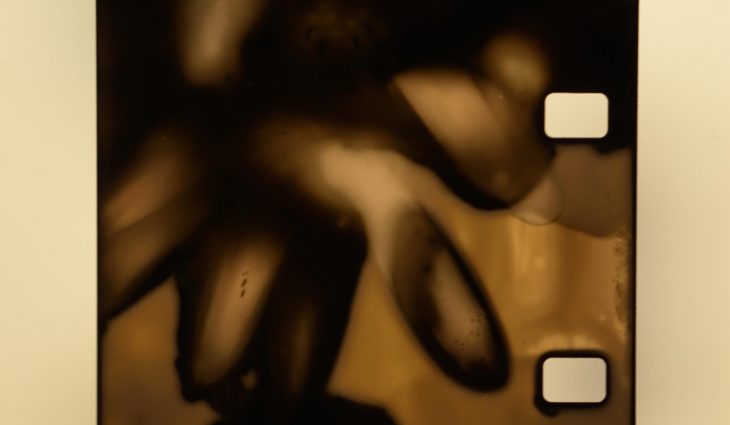
What does an analogue filmstrip look like, and what are its features? How to make a film without a camera and play it on a 16mm projector?
The workshop on experimenting with 16 mm film and phytogram-making will last three hours daily, from Friday to Sunday. It will be led by the visual artist Neža Knez, who is participating in the V-F-X Ljubljana festival with her solo exhibition Analog Diffractions #1 in the SCCA Project Room, where she will present her work using the processes that are the subject of the workshop.
The participants will each create two phytograms on photo paper and three film sequences (loops), which will be shown at a public screening in the Čufarjeva Classroom of the Slovenian Cinematheque on Friday, 12 May, 5 pm.
Detailed programme and application
______________
Production: SCCA-Ljubljana/DIVA Station; co-production: Slovenian Cinematheque; supported by: Ministry of Culture RS, City of Ljubljana – Department of Culture; thanks: Marko Turkuš.
Thursday, 11 May 2023, 6 pm
SCCA Project Room, Metelkova 6, Ljubljana
Neža Knez: Analogue Diffractions #1
Exhibition opening
Free admission
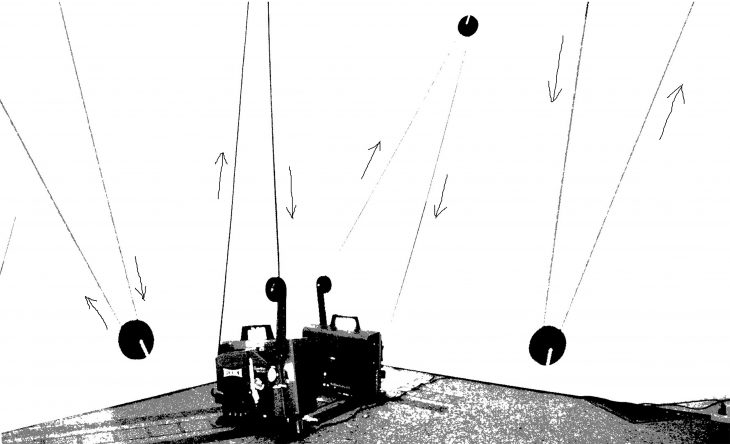
The exhibition represents the current phase of a long-time artistic and research project of the visual artist Neža Knez, which will eventually be condensed into an experimental film. By researching a specific space – her aunt’s former plot in the middle of a forest with abundant vegetation – and delving into childhood memories and experiences, the artist investigates the intertwining of memory and the passing of time. She experiments with materials and records the organic memory and the chemical-physical imprints that plants and objects leave on film in phytograms and photograms.
The exhibition intervenes in space with a kinetic installation of an expanded film projector. The artist focuses on experimenting with the materiality of analogue mechanisms and organic processes that evoke images, light and sound from the film strip. More than in the actual film image, the magic of film is manifested in revealing the process of the complex mechanical structure of image production.
As part of the V-F-X Ljubljana festival, the artist will lead an experimental workshop on learning about the materiality of film stock and making phytograms.
The exhibition will be open every day from 12 till 18 May 2023 from noon to 5 pm.
MORE
______________
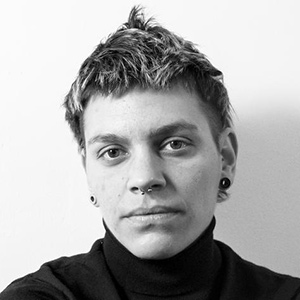 Neža Knez (1990) completed her bachelor’s and master’s studies in sculpture at the Academy of Fine Arts and Design (ALUO) in Ljubljana. She participated in the international WHW Academy in Zagreb, where she also attended the documentary and experimental film school RESTART. Neža Knez is a recipient of various awards: the recognition (2012) and award (2014) for outstanding academic achievements at ALUO in Ljubljana, the award for an innovative approach to printmaking Zlata preša (2015), the Prešeren Prize for Students for outstanding academic achievements (University of Ljubljana, 2015). For her master’s thesis, she received the highest distinction – summa cum laude (2017). In 2017, she participated in the Youth Biennale in Tirana. In 2018, she received the OHO Award and participated in a two-month residency at Residency Unlimited in New York. In 2021, she received a work scholarship from the Ministry of Culture of the Republic of Slovenia. Neža Knez has shown her work at numerous solo and group exhibitions, screenings and performances. She lives between Ljubljana and Zagreb. (Photo: Sanja Bistričić)
Neža Knez (1990) completed her bachelor’s and master’s studies in sculpture at the Academy of Fine Arts and Design (ALUO) in Ljubljana. She participated in the international WHW Academy in Zagreb, where she also attended the documentary and experimental film school RESTART. Neža Knez is a recipient of various awards: the recognition (2012) and award (2014) for outstanding academic achievements at ALUO in Ljubljana, the award for an innovative approach to printmaking Zlata preša (2015), the Prešeren Prize for Students for outstanding academic achievements (University of Ljubljana, 2015). For her master’s thesis, she received the highest distinction – summa cum laude (2017). In 2017, she participated in the Youth Biennale in Tirana. In 2018, she received the OHO Award and participated in a two-month residency at Residency Unlimited in New York. In 2021, she received a work scholarship from the Ministry of Culture of the Republic of Slovenia. Neža Knez has shown her work at numerous solo and group exhibitions, screenings and performances. She lives between Ljubljana and Zagreb. (Photo: Sanja Bistričić)
______________
Curator: Vesna Bukovec; production: SCCA-Ljubljana/Postaja DIVA; co-production: Slovenian Cinematheque; supported by: Ministry of Culture RS, City of Ljubljana – Department of Culture; thanks: Hrvoje Spudić, Klubvizija (Zagreb).
Thursday, 11 May 2023, 7.30 pm
Slovenian Cinematheque, Miklošičeva 28, Ljubljana (museum lecture room)
VR Point
RAJ X TOT and Antonio Giacomin: Journey Into the Universe of Consciousness
Presentation of the interactive multimedia VR installation
Free admission
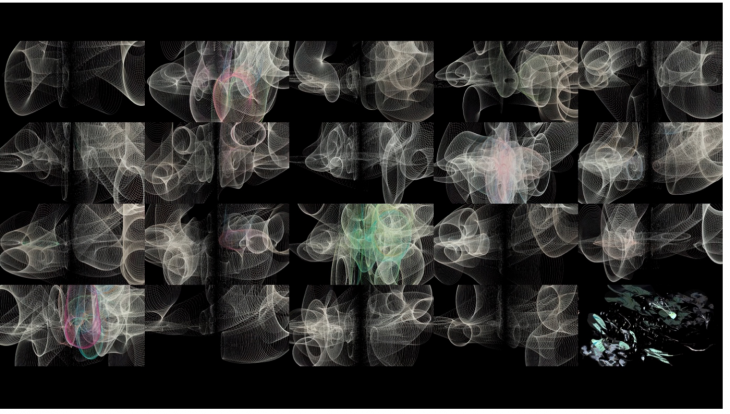
The project is an interactive multimedia art installation as well as an educational event. Visitors can place brain sensors on their foreheads and then use VR glasses to witness a three-dimensional video that tells the story of the journey of the sphinx who, as the keeper of knowledge, explores the core of its being through a 3D fight into the realm of its dreams. At the same time, the front sensor reads the brain wave frequency signals, which are then translated into a graphic image with precisely defined parameters via the (BCI) Brainwave Computer Interface, a specially adapted computer software. These video brain maps, which will also be available for purchase after the VR experience, reflect the viewers various states of meditation, concentration and movement and various cognitive, psychophysical and emotional states.
______________
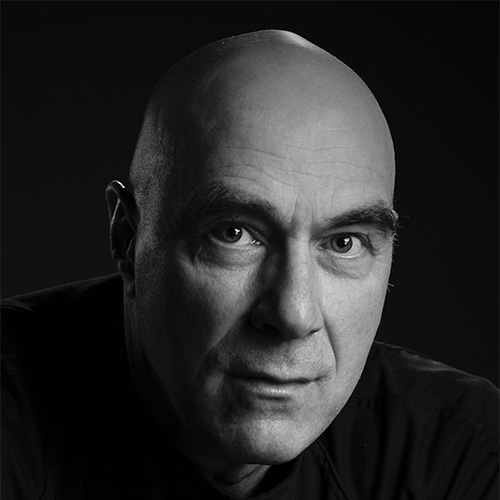 RAJ PER TOT, in graphical form RAJ X TOT, is an audiovisual artist and architect born as Rajko Pertot in Trieste where he studied violin and music that later evolved into electronic composition in London. He finished the University of Architecture in Ljubljana and got his professional habilitation at the IUAV University in Venice. He is the Creative Coordinator of the Institute for Audiovisual and Performing Arts IND – Intimate Notions’ Dream based in Ljubljana. For more than 30 years Raj Per Tot has been carrying out his professional and artistic career in different areas of fine arts, architecture, set design and teaching. Lately he oriented his artistic expression in audiovisual installations, concerts and performances creating a space of images and light with the vibration of the body, mind, sound and voice. (Photo: Jernej Čampelj)
RAJ PER TOT, in graphical form RAJ X TOT, is an audiovisual artist and architect born as Rajko Pertot in Trieste where he studied violin and music that later evolved into electronic composition in London. He finished the University of Architecture in Ljubljana and got his professional habilitation at the IUAV University in Venice. He is the Creative Coordinator of the Institute for Audiovisual and Performing Arts IND – Intimate Notions’ Dream based in Ljubljana. For more than 30 years Raj Per Tot has been carrying out his professional and artistic career in different areas of fine arts, architecture, set design and teaching. Lately he oriented his artistic expression in audiovisual installations, concerts and performances creating a space of images and light with the vibration of the body, mind, sound and voice. (Photo: Jernej Čampelj)
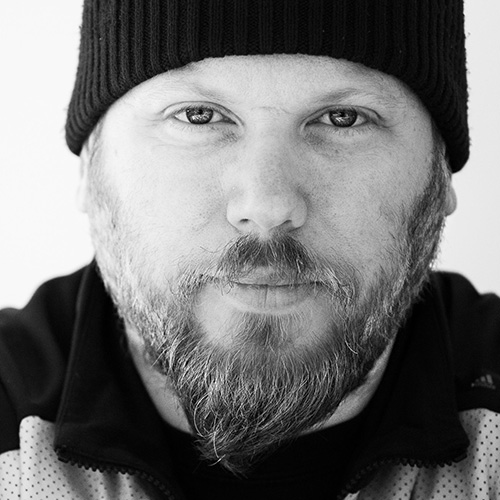 Antonio Giacomin aka. fluido was born in 1974 in Trieste. As a creative technologist and video designed started to experiment with immersive media in 2015 working on various XR projects with his company fluido.it. In 2016 became the curator for the VR section at the Trieste Film Festival and started to collaborate with Casa del Cinema in Trieste organizing events like workshops and panel on XR culture. Since 2018 is guest curator for VR content at FeKK in Ljubljana (Slovenia) and ShorTS Festival. In 2017 he was creative producer and creative technologist for the project “In the Cave”, created during the Biennale College VR program and presented at the 75th Venice Film Festival in Venice VR category. He is also a blogger and a podcaster. (Photo: Lara Perentin)
Antonio Giacomin aka. fluido was born in 1974 in Trieste. As a creative technologist and video designed started to experiment with immersive media in 2015 working on various XR projects with his company fluido.it. In 2016 became the curator for the VR section at the Trieste Film Festival and started to collaborate with Casa del Cinema in Trieste organizing events like workshops and panel on XR culture. Since 2018 is guest curator for VR content at FeKK in Ljubljana (Slovenia) and ShorTS Festival. In 2017 he was creative producer and creative technologist for the project “In the Cave”, created during the Biennale College VR program and presented at the 75th Venice Film Festival in Venice VR category. He is also a blogger and a podcaster. (Photo: Lara Perentin)
______________
The project won the competition held by the Center for Creativity of the Ministry of Culture RS with funds from the European Regional Development Fund; produced by Rosa Production in collaboration with the Herman Potočnik Noordung Center of Space Technologies.
VR Point is SCCA-Ljubljana’s programme for the promotion and distribution of VR and AR creativity. It is part of the Open Videosphere project, which is supported by the Ministry of Culture of the Republic of Slovenia and the City of Ljubljana – Department of Culture.
Thursday, 11 May 2023, 9 pm
Slovenian Cinematheque, Miklošičeva 28, Ljubljana
Author in Focus: Gudrun Krebitz
Screening and artist Q&A
Tickets: 4,40 €*
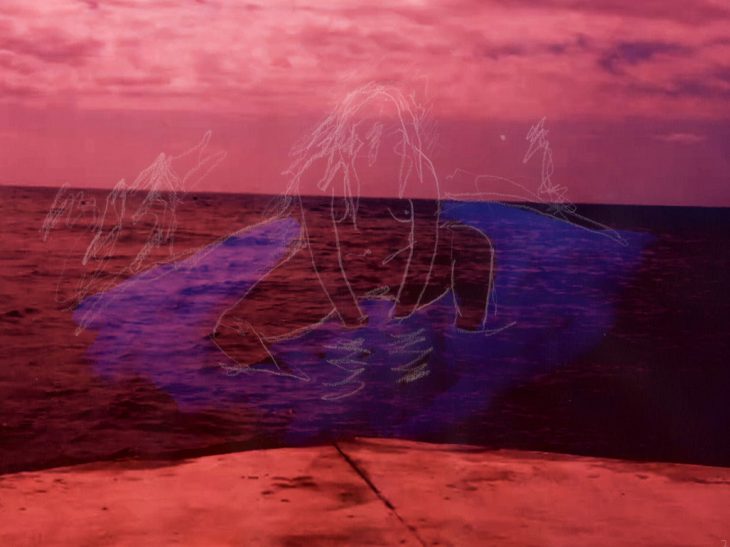
The filmmaker in focus at the third edition of V-F-X Ljubljana is Gudrun Krebitz. She is an original, daring artist who has been creating a unique oeuvre for almost fifteen years. Her drawings, narrative-based short films and installations have been presented at exhibition spaces and film festivals worldwide. In her films, she animates drawings and paintings, but does not consider herself an animator. In her films, she experimentally documents her life. Gudrun is not a film director, she makes films like the rest of us breathe to survive.
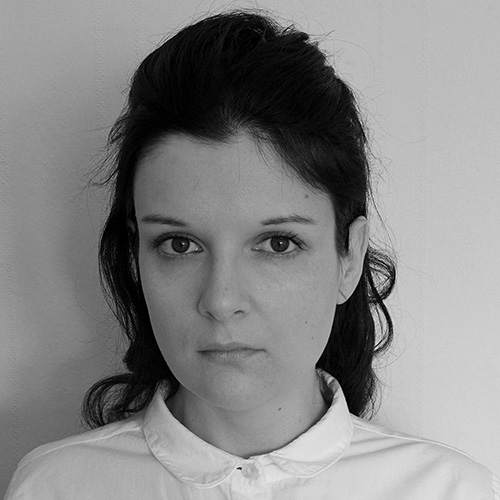 Gudrun Krebitz was born in 1983 in Graz. She is an artist and filmmaker whose work focuses on experimental animation, installation, and single image drawing. Her drawings, narrative-based short films, and installations have been screened and presented at exhibition spaces and film festivals worldwide, including the Berlinische Galerie, ICA London, Museum of Contemporary Art Frankfurt, MUMOK Vienna, London Short Film Festival, International Film Festival Oberhausen, Annecy International Animated Film Festival and the American Documentary film festival Palm Springs. Her films have won main awards including the Grand Prix at Tampere, the Jury Prize at Short Film Festival Hamburg, the Golden Horseman at Filmfest Dresden as well as Jury Prizes at the Poetry Film Festivals in Berlin and Vienna. She received the Prize for an Experimental Animation by the “Künstlerhaus Wien/ Artist House Vienna” for EXOMOON and was a holder of scholarships by the German Academic Exchange Programme, the Film/ Video Artist Programme of the Berlin Senate as well as the Stiftung Kunstfonds- Art Foundation. She graduated from the Royal College of Art in London in 2015 and studied Animation at the University of Film and Television in Potsdam-Babelsberg. Krebitz currently lives and works in Berlin. (Photo: sixpackfilm)
Gudrun Krebitz was born in 1983 in Graz. She is an artist and filmmaker whose work focuses on experimental animation, installation, and single image drawing. Her drawings, narrative-based short films, and installations have been screened and presented at exhibition spaces and film festivals worldwide, including the Berlinische Galerie, ICA London, Museum of Contemporary Art Frankfurt, MUMOK Vienna, London Short Film Festival, International Film Festival Oberhausen, Annecy International Animated Film Festival and the American Documentary film festival Palm Springs. Her films have won main awards including the Grand Prix at Tampere, the Jury Prize at Short Film Festival Hamburg, the Golden Horseman at Filmfest Dresden as well as Jury Prizes at the Poetry Film Festivals in Berlin and Vienna. She received the Prize for an Experimental Animation by the “Künstlerhaus Wien/ Artist House Vienna” for EXOMOON and was a holder of scholarships by the German Academic Exchange Programme, the Film/ Video Artist Programme of the Berlin Senate as well as the Stiftung Kunstfonds- Art Foundation. She graduated from the Royal College of Art in London in 2015 and studied Animation at the University of Film and Television in Potsdam-Babelsberg. Krebitz currently lives and works in Berlin. (Photo: sixpackfilm)
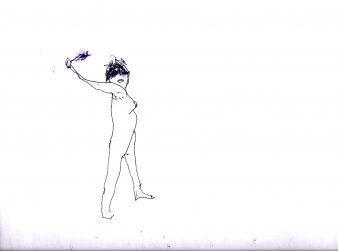
Gudrun Krebitz, Germany, 2009, digital format (shot on BetaSP), 1.33, B&W, 3’55”, slovenian subtitles
______________
An unanswered telephone, an attempt to dance, a knife in a drawer. I know you – do you know who you are dealing with?
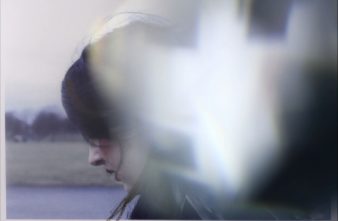
Gudrun Krebitz, Austria/Germany, 2012, DCP, 1.85, B&W/colour, 9′, slovenian subtitles
______________
A bizarre visual discourse that seems to tell the story of a boy and a girl meeting in a bar. Through the mixed medium of animation and live-action we understand why this particular girl is so difficult to talk to.
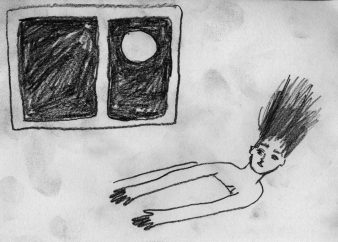
Gudrun Krebitz, Austria/UK, 2014, DCP, 16:9, B&W, 4’10’’, slovenian subtitles
______________
It is difficult to fit in, especially when you are new in town. A hand drawn animated short full of awkwardness, fun, an imaginary friend and the things that keep you up at night while your mind plays you a best-of compilation of today´s conversations.
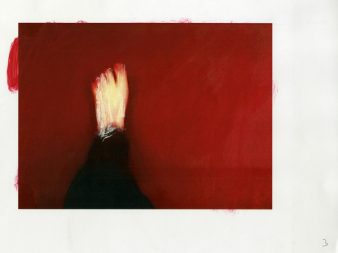
Gudrun Krebitz, UK/Austria, 2016, DCP, 16:9, colour, 6’19’’, slovenian subtitles
______________
“Because she´s been alone for a long time and there´s no one else, she might as well live on the moon.” This film piece is about existence, about being present and in the ´now´ of the moment, which the film conveys as it seamlessly glides through various states of day and night.
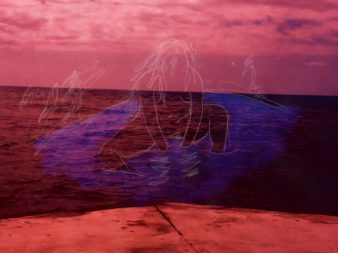
Gudrun Krebitz, Germany/Austria, 2018, DCP, 1.37, colour, 7’, slovenian subtitles
______________
A journey through Graveyards, unknown waters, poems, dreams and wishes, telling us that what we long for is waiting for us and we can meet it in our very own underworld.
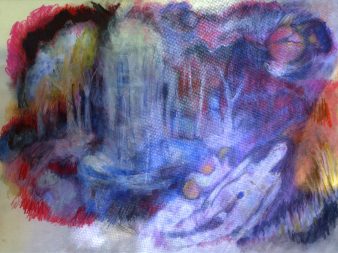
Gudrun Krebitz, Austria/Germany, 2022, DCP, 16:9, colour, slovenian subtitles
______________
With the sound of rippling water, we submerge in a blue visual cosmos of a bathtub and wet universe. A red curtain introduces the play of fire. Two worlds that magically interfuse. This animated collage is a multivocal underwater meditation on fear, loneliness, and the power of imagination. We are not alone in the dark, you will see!
We thank the Austrian Cultural Forum in Ljubljana for their help in organising this programme.
Friday, 12 May 2023, 5 pm
Slovenian Cinematheque, Miklošičeva 28, Ljubljana (Čufarjeva Classroom)
A Picture of the Materiality of Light and the Toxins of Plants
Presentation of the Workshop
Free admission

A public screening of film sequences (loops) created at the workshop of experimenting with 16mm film and making phytograms led by the visual artist Neža Knez. With the phytogram technique, we create images, colours and textures on film stock without a camera and chemicals, only with the help of chemical reactions triggered by the contact with various plants.
MORE
______________
Production: SCCA-Ljubljana/DIVA Station; co-production: Slovenian Cinematheque; supported by: Ministry of Culture RS, City of Ljubljana – Department of Culture; thanks: Marko Turkuš.
Friday, 12 May 2023, 7 pm
Slovenian Cinematheque, Miklošičeva 28, Ljubljana
Everything Moves: New Light from the Avant-garde Collections of the Slovenian Cinematheque
Screening and talk
Tickets: 4,40 €*
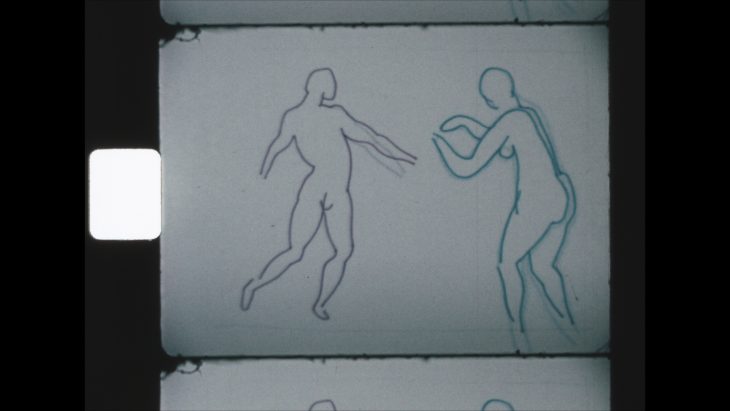
In 2010, the Slovenian Cinematheque began systematically creating special collections focusing on the previously overlooked history of Slovenian avantgarde and experimental cinema. Now, thirteen years later, these collections include over a hundred archived titles. In the last year, the Cinematheque has accelerated its systematic digitisation and restoration of avant-garde films. In the first part of the programme, we will present our collection of experimental animated films by Tone Rački, which will be screened from 8mm prints in the presence of the filmmaker. In the second part, we will present a selection of Slovenian experimental films that the Cinematheque digitally restored in the last year.
After the screening, Matevž Jerman will talk with Tone Rački.
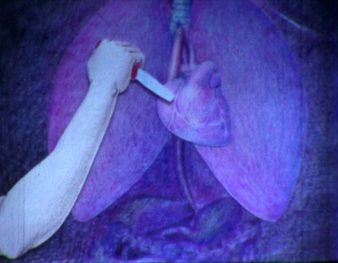
Tone Rački, Slovenia (Yugoslavia), 1970, 8mm, 4:3, colour, 3’, no dialogue
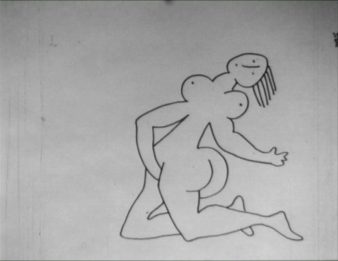
Tone Rački, Slovenia (Yugoslavia), 1971, 8mm, 4:3, B&W, 2’, no dialogue
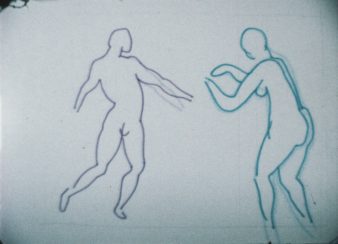
Tone Rački, Slovenia (Yugoslavia), 1972, Super 8mm, 4:3, colour, 3’, no dialogue
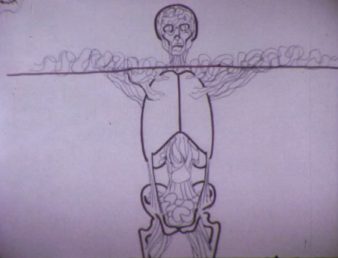
Tone Rački, Slovenia (Yugoslavia), 1972, 8mm, 4:3, colour, 3’, silent
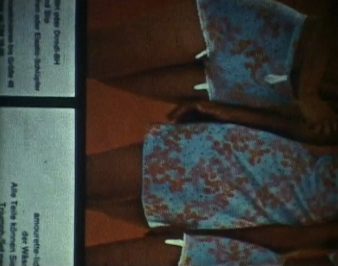
Tone Rački, Slovenia (Yugoslavia), 1968, 8mm, 4:3, B&W/colour, 3’, silent
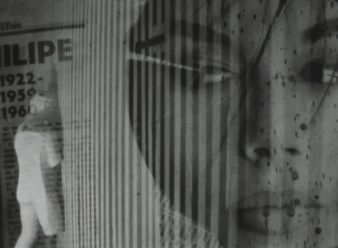
Vasko Pregelj, Slovenia (Yugoslavia), 1965, digital format (shot on 8mm), 14’, no dialogue
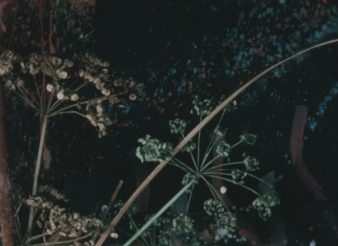
Vasko Pregelj, Slovenia (Yugoslavia), 1966, digital format (shot on 8mm), 6’, silent
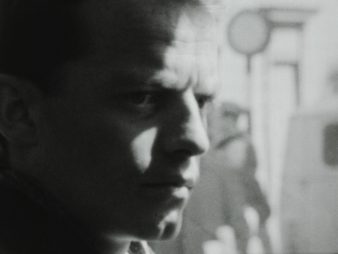
Vinko Rozman, Slovenia (Yugoslavia), 1965, digital format (shot on 8mm), 6’, no dialogue
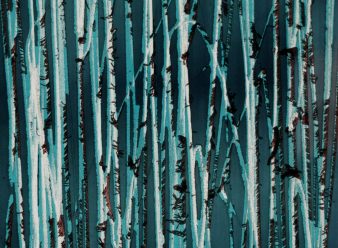
Davorin Marc, Slovenia (Yugoslavia), 1978, digital format (shot on 8mm), 2’, no dialogue
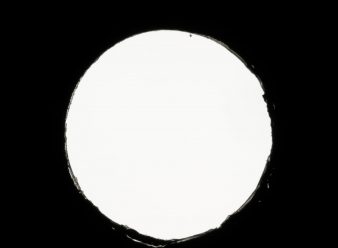
Davorin Marc, Davorin Marc, Slovenia, 2013, digital format (shot on 16mm), colour, 2’, no dialogue
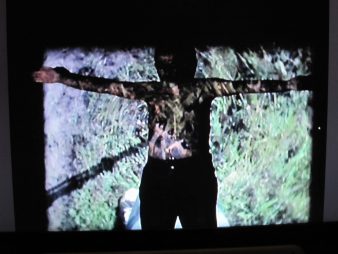
Sulejman Ferenčak, OM Produkcija, Slovenia (Yugoslavia), 1984, digital format (shot on 8mm), 29’, no dialogue
Friday, 12 May 2023, 9 pm
Slovenian Cinematheque, Miklošičeva 28, Ljubljana
Salts and Grounds.
Programme of Pan-American Cinema I: Living Scents
Screening
Tickets: 4,40 €*
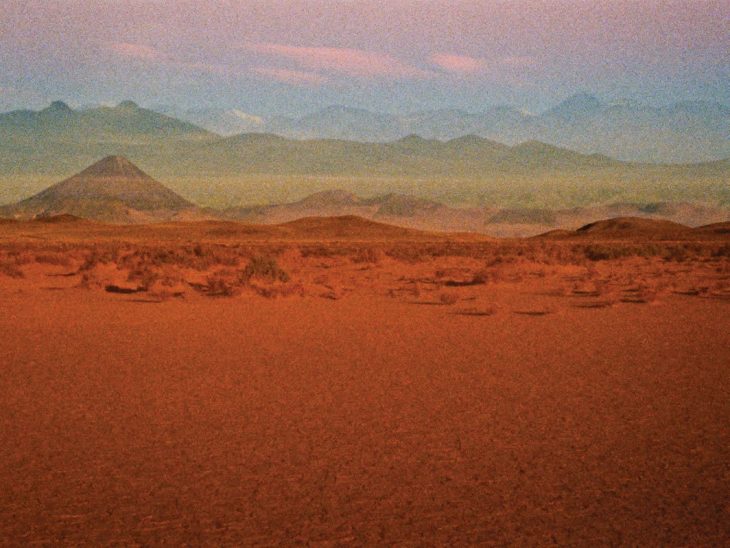
This program operates as an attempt at conjuring the primordial grounds where subsurface vapors emerge, where the deep speaks in riddles of volcanic fumes. Orbiting around the core of that light can lead to blissful blindness, and a cinema of blindness is also the cinema of the labyrinth and the cinema of ruin. The cinema of the oculus begins in the black hole, a living manifestation of our thoughts in a tunnel of light; sensitive, free, indecisive and collective.The remembrance, a ruin conjured, the beginning of the labyrinth. Metempsychosis of prenatal reverie: the source of an inner cosmos. It all ends where it all started, a primordial ruin of epic proportions. Then cinema of the phoenix, from dust to glorious ocean.
The programme will be introduced by the curator Jean-Jacques Martinod.
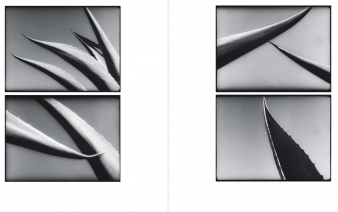
Rubén Gámez, Rubén Gámez, Mexico, 1962, digital format (shot on 16mm), B&W, 8’50’’, no dialogue
______________
The film explores an allegory of the Mexican revolution through the most iconic plant of the Mexican cultural imaginary, the maguey. Unlike Eisenstein and other authors who spoke on this subject, Gámez decides not to take a side in the struggle and although he makes his magueys fight through visual experimentation, the battle is that of nature.
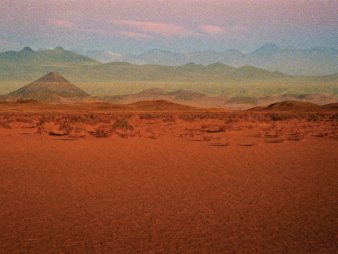
Malena Szlam, Chile/Argentina/Canada, 2018, DCP (shot on 35mm), colour, 15’30’’, no dialogue
______________
Filmed in the Andean Mountains in the traditional lands of the Atacameño, Aymara, and Calchaquí-Diaguita in Northern Chile and Northwest Argentina, the film takes place within a geological universe of ancestral salt flats, volcanic deserts, and coloured lakes. Fusing earth with sky, day with night, heartbeat with mountain, and mineral with iridescent cloud, the film reveals a vibrating landscape in which a bright blue sun forever threatens to eclipse a blood-red moon.
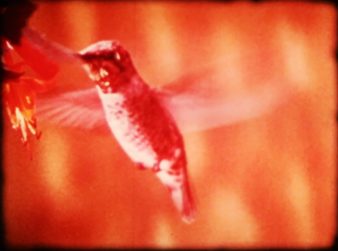
Ivonne Sheen, Rebeca Albán, Peru, 2018, DCP (shot on 16mm), B&W/colour, 11’44’’, no dialogue
______________
Humans, Animals, Earth, Wind and Water, all converge with the same energy of a filmic fire that traverses and relates them. Composed of educational images from 16mm films, once used to educate us, the film evokes a poetic collision between images of the human and the animal.
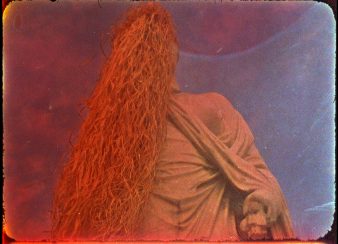
Cristiana Miranda, Cristiana Miranda, Brazil, 2016, DCP (shot on 16mm), colour, 8’35’’, no dialogue
______________
The Roman statues of the Hanging Garden of Valongo hide histories of blood and death. A garden seven meters up from the ground, with long stairways that border the Hill of Conceição, from where they stand guard over the bends of Guanabara Bay, that the city insists on occupying. A monument for a city of slaves. The film brings the memory of the slave markets, which took place there before the construction of the Garden, before the landfill of the Valongo Port. We cover the Roman statues with straw of Omulú, an originally African God, to question the symbolic narratives of the so many oppressions that constitute us, the daily violence of worshiping distant and imposed symbols.
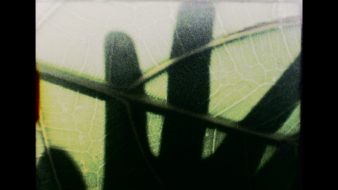
Bruno Varela, Bruno Varela, Mexico, 2020, DCP, colour, 14’08’’, english and slovenian subtitles
______________
An exercise in random materialist cinema, reels inhabited by structures where several temporalities collapse in the film development and scanning, becoming embedded in a common memory, and end up for weaving a mutated piece of light and vapours. Speculative fiction, vegetal narration, dream of seeds.
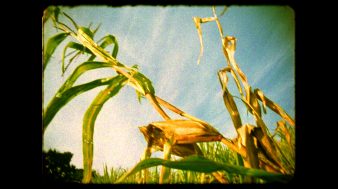
Kolektiv Los ingrávidos, Colectivo los Ingrávidos, Mexico, 2019, DCP, colour, 8’50’’, no dialogue
______________
The Pyramid used to be a mountain.
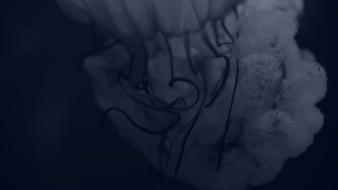
Sebastian Wiedemann, Columbia, 2020, DCP, colour, 7’45’’, no dialogue
______________
Springs and Apneas between Worlds to resist and re-exist the pandemic. The power of the womb of the world. Faced with thousands of bodies that cannot breathe and die from Covid-19, this work was meant to reflect on the force of apnea as a way to access primal states of life. If Covid-19 was a consequence of anthropic actions, this work is proposed to be a gesture of resistance by appealing to a connection with the cosmos and the sources of life. » Deep Blue: A Cinematic In-Between-Living’s Memories of Future by Sebastian Wiedemann
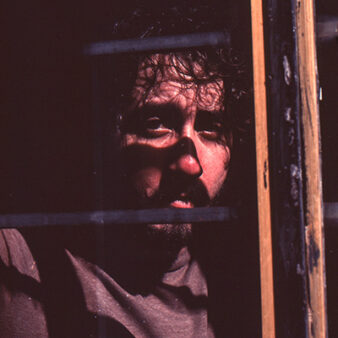 Jean-Jacques Martinod is an Ecuadorian filmmaker, radio DJ & media artist. Inhabiting living locales as deterritorialized landscapes, his practice consistently considers the interrelations inherent in fluctuating psychic geographies and expanded human noesis. His works endeavor to interrogate sensory cognition in relation to the natural world, potential planes and parapoetic territories, by interlacing ethnofiction with artisanal experimental film techniques.
Jean-Jacques Martinod is an Ecuadorian filmmaker, radio DJ & media artist. Inhabiting living locales as deterritorialized landscapes, his practice consistently considers the interrelations inherent in fluctuating psychic geographies and expanded human noesis. His works endeavor to interrogate sensory cognition in relation to the natural world, potential planes and parapoetic territories, by interlacing ethnofiction with artisanal experimental film techniques.
His work has earned awards and screened in museums, galleries, film festivals and independent artist-led spaces and co-ops, including The Museum of the Moving Image, Cinemateca Nacional del Ecuador, Cinemateca do MAM Rio de Janeiro, Cinemateca de Bogotá, Centre PHI Montreal, International Film Festival Rotterdam, Nomadica at LABA, Sheffield Doc/Fest, FIDMarseille, Mar del Plata, DocumentaMadrid, European Media Arts Festival, 25FPS, Images Festival, Frontera Sur, Camden International Film Festival, Alchemy Film and Moving Image Festival, Fracto Experimental Film Encounter, Experiments in Cinema, Encuentros Cinematográficos Cámara Lúcida, among many others. (Photo: personal archive)
______________
We thank Keiser University, Florida for their support in putting on this programme.
Saturday, 13 May 2023, 5 pm
Slovenian Cinematheque, Miklošičeva 28, Ljubljana
Analogue Formats in the Digital Environment
Panel discussion
Free tickets will be available one hour before the event.
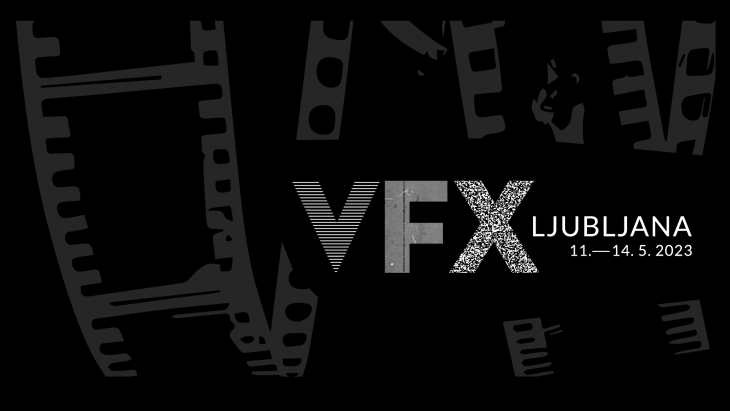
Participants: Ivonne Sheen (Peru), Ejla Kovačević (Croatia), Jan Kulka (Czech Republic), Vladislav Knežević (Croatia), Anže Peršin (Slovenia/Portugal)
Moderator: Varja Močnik
With the visiting filmmakers, we will discuss their work with analogue film material, how it defines their expression, how they understand the aesthetic and ethics of the analogue in relation to the digital and the future of such art practices.
Saturday, 13 May 2023, 7 pm
Slovenian Cinematheque, Miklošičeva 28, Ljubljana
Salts and Grounds.
Programme of Pan-American Cinema II: Please an Abyss
Screening
Tickets: 4,40 €*
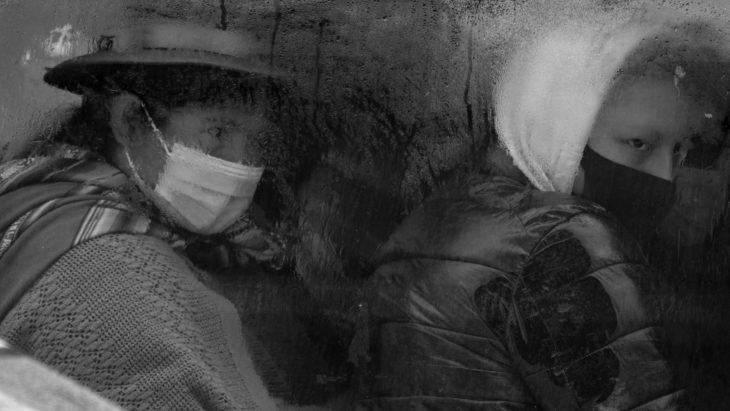
In these short works we will find a collage of potentials, of activated sharpened shards made manifest in radical gestures, where alternate screens become intertwined with the subconscious meanderings of our days. The presented works both unveil and counteract the miasmatic profusions of power structures, they point new directions by designing circumventions, lotions, poisons, while sharpening bayonets, while calling for new
worlds that reflect on those past, feedback loops in communion with futures to come. Calling out the vampiric demiurge, designing portals, inserting bombs into the bowels of the hydra. There is a place beyond thought; a place where intuition is scrambled. One eye in focus within the dense smoke. These are dissident works, they apply living pulses in spines and spirals, slicing open an ultimate howling.
The programme will be introduced by the curator Jean-Jacques Martinod.
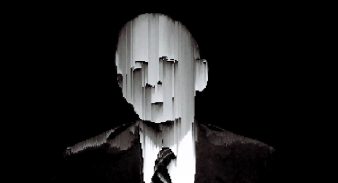
Gabriel Sanceau Fuks, Brazil/Canada, 2015, DCP, B&W, 11’, no dialogue
______________
“The architects of power in the United States must create a force that can be felt but not seen. Power remains strong when it remains in the dark; exposed to the sunlight it begins to evaporate” — Samuel P. Huntington

Sebastián Zanzottera, Argentina, 2022, DCP, colour, 15’, no dialogue
______________
Images of the sea set on fire trigger a dream with photographs of my father at an oil and gas plant in the Patagonian steppe in 1982. He took these photos while he was working for the Argentine State Gas Company, before its privatization and closure. In those plants, the soundscape of the wind merges with the hum of the machines, just as the extraction of fuel merges with the damage to the land and bodies. The film proposes a dreamlike crossing absences, marks on the body and the construction of masculinity of oil and gas workers.
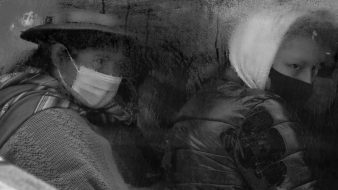
Miguel Hilari, Miguel Hilari, Bolivia, 2021, DCP, B&W, 13’15’’, no dialogue
______________
A mountain range in fog and snow. Human absence, ancient sacred places. Traces appear: Dirt roads, antennas, transmission lines. Human faces appear, behind windows and rain. A city.
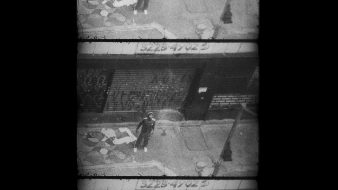
Azucena Losana, BBrazil/Mexico/Argentina, 2021, DCP (shot on 16mm), B&W, 2’06’’, english subtitles
______________
The electromagnetic landscapes of Sao Paulo and Rio de Janeiro go on an irregular basis and it is possible to see what’s outside the frame. This image hacking is connected to the poem E se Jesus fosse preto (And if Jesus was black) from the brazilian poet Bruno Negrão, who proposes a new way to imagine some of our ingrained beliefs.
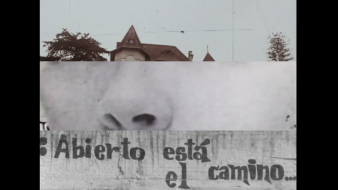
Martin Baus, Chile/Ecuador, 2021, DCP, B&W/colour, 10’, english and slovenian subtitles
______________
Inspired by a series of poetic interventions made by Nicanor Parra, Enrique Lihn and Alejandro Jodorowsky in 1952, the film creates a collage from a series of Chilean films of the militant agit-prop imaginary prior to the coup d’état, intermingling it with a filmic record of graffiti made on the walls after the revolt of October 2019. The result is a plastic encounter between the political language of the past and the present.
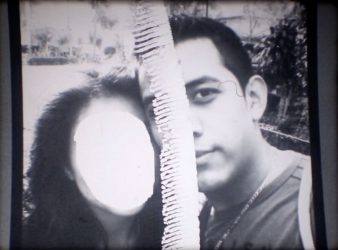
Annalissa Quagliatta, Mexico, 2016, DCP (shot on 16mm), B&W, 2’45’’, english and slovenian subtitles
______________
The film illustrates Mexico as a country where the ones denouncing corruption and impunity are silenced. The main focus of the piece is the murder of reporter Rubén Espinosa, activist Nadia Vera, Alejandra Negrete, Yesenia Quiroz y Mile Virginia, an iconic event that exemplifies the growing violence in the state of Veracruz. The use of b&w film gives it the look of another era: The context of violence and injustice are current but the issues seem to be the same as before, like an old story that repeats over and over again.
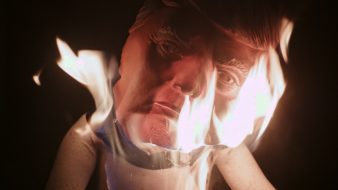
M. Woods,USA, 2018, DCP, colour, 5’40’’, no dialogue
______________
This is a media-fashioned attack aimed at the disturbing omnipotence of hyperrealism and fascist banality – best symbolized by Donald Trump’s burning latex effigy. This is a violent collage – shreds of simulacral tumult, a riot in media waste. Meant to be projected anywhere – as a call to arms, a way to incite, an attempt at shaking the normalization of bigotry and authoritarianism. This is a call to #Revolt more than #Resist. This is not for photo ops. Rather than bathe in the aesthetics of nothingness, it is time to wake up and fight the active evil that radiates from the seat of “power” and alters the real through mediated nihilism.
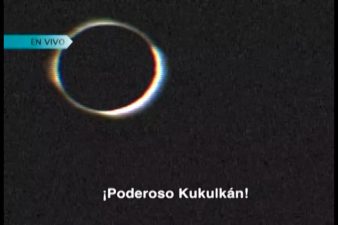
Jorge Bordello, Mexico, 2015, DCP, colour, 8′, slovenian subtitles
______________
December 1, 2012. Kukulkán has quenched his thirst with another six-year sacrifice. Enrique Peña Nieto is sworn as President of Mexico.
 Jean-Jacques Martinod is an Ecuadorian filmmaker, radio DJ & media artist. Inhabiting living locales as deterritorialized landscapes, his practice consistently considers the interrelations inherent in fluctuating psychic geographies and expanded human noesis. His works endeavor to interrogate sensory cognition in relation to the natural world, potential planes and parapoetic territories, by interlacing ethnofiction with artisanal experimental film techniques.
Jean-Jacques Martinod is an Ecuadorian filmmaker, radio DJ & media artist. Inhabiting living locales as deterritorialized landscapes, his practice consistently considers the interrelations inherent in fluctuating psychic geographies and expanded human noesis. His works endeavor to interrogate sensory cognition in relation to the natural world, potential planes and parapoetic territories, by interlacing ethnofiction with artisanal experimental film techniques.
His work has earned awards and screened in museums, galleries, film festivals and independent artist-led spaces and co-ops, including The Museum of the Moving Image, Cinemateca Nacional del Ecuador, Cinemateca do MAM Rio de Janeiro, Cinemateca de Bogotá, Centre PHI Montreal, International Film Festival Rotterdam, Nomadica at LABA, Sheffield Doc/Fest, FIDMarseille, Mar del Plata, DocumentaMadrid, European Media Arts Festival, 25FPS, Images Festival, Frontera Sur, Camden International Film Festival, Alchemy Film and Moving Image Festival, Fracto Experimental Film Encounter, Experiments in Cinema, Encuentros Cinematográficos Cámara Lúcida, among many others. (Photo: personal archive)
______________
We thank Keiser University, Florida for their support in putting on this programme.
Saturday, 13 May 2023, 9 pm
Slovenian Cinematheque, Miklošičeva 28, Ljubljana
Vistas I
Screening
Tickets: 4,40 €*
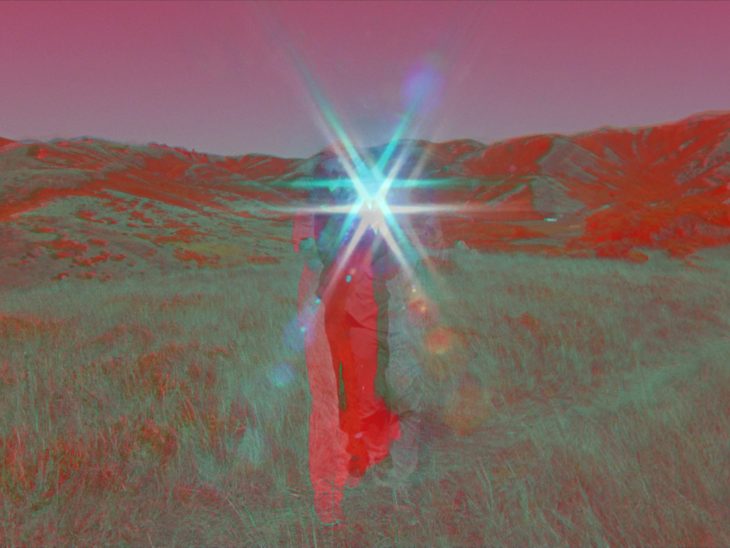
Selection of the Programme Team.
The film Last Things will be introduced by the co-producer Anže Peršin, Stenar Projects.
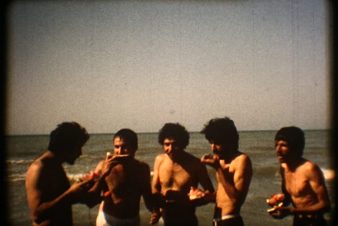
Mohammadreza Farzad, Mohammadreza Farzad, Poland/Germany/Iran, 2022, DCP (shot on 8mm), B&W/colour, 15’03’’, english and slovenian subtitles
______________
A poetic essay meticulously constructed from clips of Iranian 8mm home videos from bygone days. As we watch birthdays and wedding parties, people dancing, laughing, swimming or just relaxing, a narrator, in a contemplative, sometimes heavy voice, enumerates series of dry facts. But what does it matter how many kisses one received, how many times one truly laughed or what time one went to bed or got up? Can adding up such numbers sum up a life?These listings of figures alternate with brief confessional phrases that evoke an entire hidden world: “Because I am funny, people think I’m happy,” and “I love myself less than I have been loved.” The film was inspired by the eponymous short story by Gregory Burnham and Édouard Levé’s novel Autoportrait.
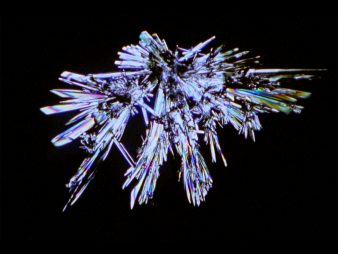
Deborah Stratman, France/USA/Portugal, 2023, DCP (shot on 16mm), 4:3, colour, 50’, english and slovenian subtitles
______________
Evolution and extinction from the point of view of rocks and various future others. The geo-biosphere is introduced as a place of evolutionary possibility, where humans disappear but life endures.The human race is old, but rocks are timeless. Weaving stunning imagery with evocative text and interviews, the film observes the history of all of us and this planet Earth through the most essential parts — evolution and extinction, from the POV of rocks. The immensity of our existence is hard to fathom, and we are obsessed with our past, looking for reasons. A huge journey we should take on a cinema screen. In a distinctive style seen throughout her long career, Deborah Stratman skilfully combines pure science with speculative fiction, not to give you an answer to the meaning of life, but to provide sounds, images, and ideas to contemplate. The use of both microscopic and landscape photography, we see the luscious textures of rocks and matter and our handprints on it. Texts from writers enhance the journey, ranging from the creators of the science fiction genre to experts of stream-ofconsciousness reflections. Stratman blurs the borders of poetry, narrative, and fact in an ethereal adventure. As one interviewee states, “Rocks have a history, but they don’t remember it.”
Sunday, 14 May 2023, 7 pm
Slovenian Cinematheque, Miklošičeva 28, Ljubljana
Jan Kulka
Film Performance
Tickets: 4,40 €*
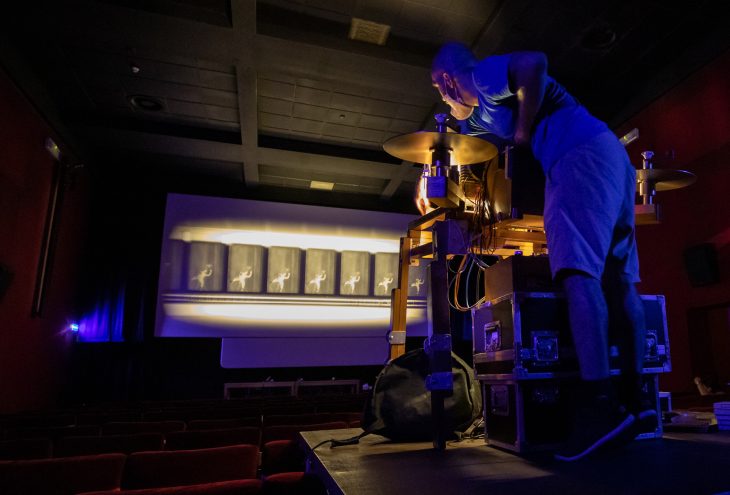
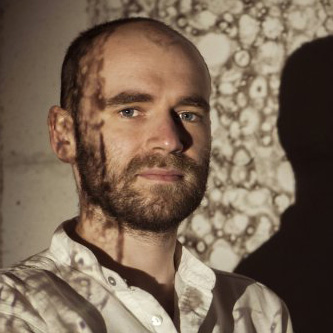 Jan Kulka is a Prague-based experimental filmmaker and a graduate of Editing department at the FAMU. His primary focus is the invention of special projection apparatuses for live performances. Rather than telling a story, he tries to target the senses of each spectator directly with light and sound to reveal some of the foundations of our perception. (Photo: personal archive)
Jan Kulka is a Prague-based experimental filmmaker and a graduate of Editing department at the FAMU. His primary focus is the invention of special projection apparatuses for live performances. Rather than telling a story, he tries to target the senses of each spectator directly with light and sound to reveal some of the foundations of our perception. (Photo: personal archive)
Archeoscope (Pramítačka)
New worlds of film discovered by unique projection technology: the Archeoscope is a special opto-mechanical projecting apparatus created for live film performances, invented and constructed by Czech filmmaker Jan Kulka. The Archeoscope can project all traditional film formats, but also a scope of mixed media such as bandages, Scotch tape, laces, bubble wraps – an array as broad as the imagination. The Archeoscope brings brand new possibilities and radically different ways of perceiving, understanding, and working with film material, alongside modernising creative process of the act of projection.
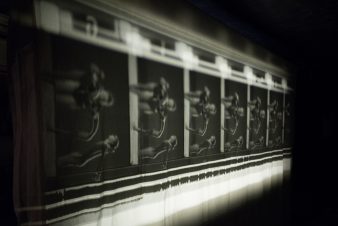
Jan Kulka, Czech Republic, 2016, 16mm, B&W, 24’, no dialogue
______________
Fragments of an old educational film for dancers inside a live operated experimental film projector serve as matter for an immersive study of essential principles of the film medium and perception itself. Besides the main focus on the phenomenon of the illusion of movement, its emergence, modulation and decay, the film also plays the ‘what if’ game around the ‘musical’ and rhythmical potential of the frame rate, which is usually just a regular metronomic pulse. What if it adapts various rhythmic structures? Synchronised polyrhythmic sequences, chaotic or linear interfering frequencies?
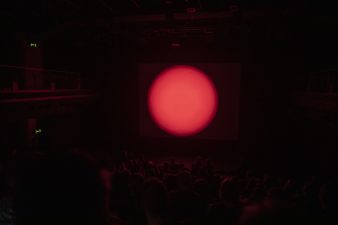
Jan Kulka, Czech Republic, 2016, 16mm, B&W/colour, 22’, no dialogue
______________
A film piece can hardly get more elementary than a sequence of light and dark moments in time and, yet, flickering light is an ever so powerful phenomenon, with literary unimaginable transcendental potential. So rich while virtually empty. Stimulating senses and triggering the mind by medium as a massage.Prefilm utilises the wide range of new possibilities – multiple overlapping, interfering, synchronised and precisely controlled nuances of the flickering light of a special projector to target the ticklish spots of perception. An intensive contemporary live analogue contribution to the flicker film tradition.
Sunday, 14 May 2023, 9 pm
Slovenian Cinematheque, Miklošičeva 28, Ljubljana
Vistas II
Screening
Tickets: 4,40 €*
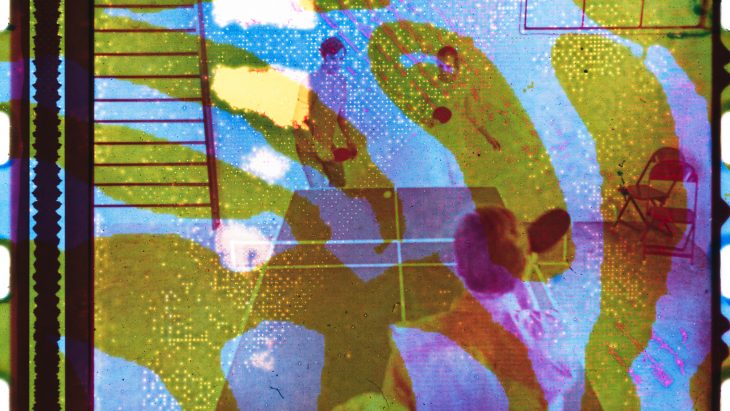
Selection of the Programme Team.
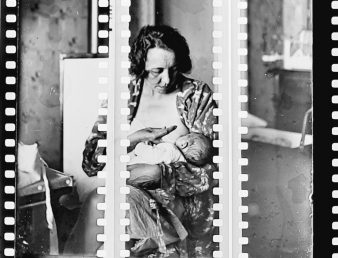
Eve Heller, Austria, 2021, DCP, 1.37, B&W, 13’, no dialogue
______________
The film interweaves footage shot on location with images painstakingly lifted from antique glass negatives and printed one frame at a time in a darkroom onto 35mm film-strips.
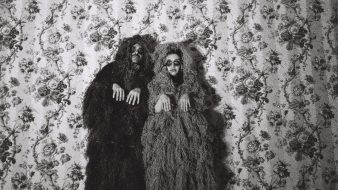
Marie Losier, France, 2021, DCP (shot on 16mm), 16:9, colour, 11’06’’, english and slovenian subtitles
______________
Set inside the Museum of Hunting and Nature in Paris, the film sees an ambiguous and apparently playful mirroring between
the taxidermied animals portrayed and a series of liminal figures between the feral and human universe.
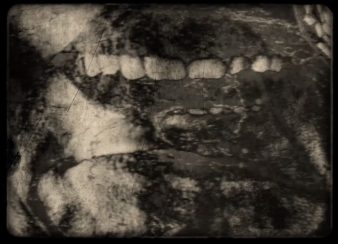
Vladislav Knežević, Croatia, 2022, DCP, B&W/colour, 15’27’’, no dialogue
______________
Analogue photographs, chemical processes and digital micro-animation establish an interspace between the photographic and
cinematic, the static and the moved. The form as a shape of energy transforms the view. Every moment for itself and
simultaneously, eternity. The outer space and the constellations, the coldness, the doubt and the movement, chance and an attempt of conscious break.
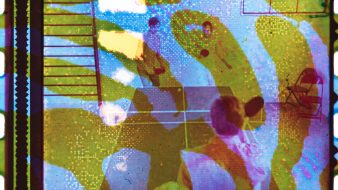
Vasja Lebarič, Julij Zornik, Slovenia, 2022, DCP, 1.85, colour, 11’, no dialogue
______________
An animated-experimental film which, in accordance with the process of creation – the chemical and thermomechanical processes – features coincidences as its immanent part and thus tries to surpass the conventions of traditional animation and
narration.
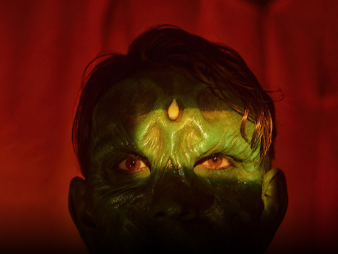
Yann Gonzalez, UK, 2022, DCP, 1.50, B&W/colour, 22′, 22’, slovenian subtitles
______________
In this romantic, queer musical, Yann Gonzalez directs singer Oliver Sim as he faces his inspirations and demons. A stirring
tribute to B films, VHS tapes and 70s-80s short-film-like video clips. Nostalgia, dreams and monsters run wild on film. Gore, disco balls, an imaginary TV set and celebrity guest-stars, such as drag queen Bimini Bon Boulash and singer Jimmy Sommerville.
WARNING: Some of the films contain strong flashing light and sound signals
*Admission according to the Slovenian Cinematheque price list: 4,40 € regular / 2,20 € Kinopolis / free for unemployed people and persons with disability.
Festival Programme Team: Anja Banko, Vesna Bukovec, Peter Cerovšek, Matevž Jerman, Varja Močnik, Igor Prassel
Festival Guests: Martin Baus (Chile/Ecuador), Antonio Giacomin (Italy), Neža Knez (Slovenia), Vladislav Knežević (Croatia), Gudrun Krebitz (Austria/Germany), Jan Kulka (Czech Republic), Jean-Jacques Martinod (Ecuador), Anže Peršin (Slovenia/Portugal), Tone Rački (Slovenia), Ivonne Sheen (Peru), RAJ X TOT (Slovenia)
Visual Identity: Vesna Bukovec
Festival Booklet Design: Maja Rebov
Slovenian language editing: Mojca Hudolin
Texts translation: Maja Lovrenov
Film Translation and Subtitling: Maja Lovrenov, Janina Kos, Diana Jenko
Production: SCCA-Ljubljana/DIVA Station
Co-production: Slovenian Cinematheque
Festival is supported by: Slovenian Film Centre, City of Ljubljana – Department of Culture
VR Point and the exhibition are supported by: Ministry of Culture RS, City of Ljubljana – Department of Culture
Thanks: Austrian Cultural Forum Ljubljana, Keiser University (Florida), Marko Turkuš, Hrvoje Spudić, Klubvizija (Zagreb), Forum Ljubljana
![]()
![]()
![]()
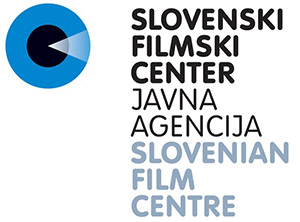
![]()
![]()
![]()
![]()

